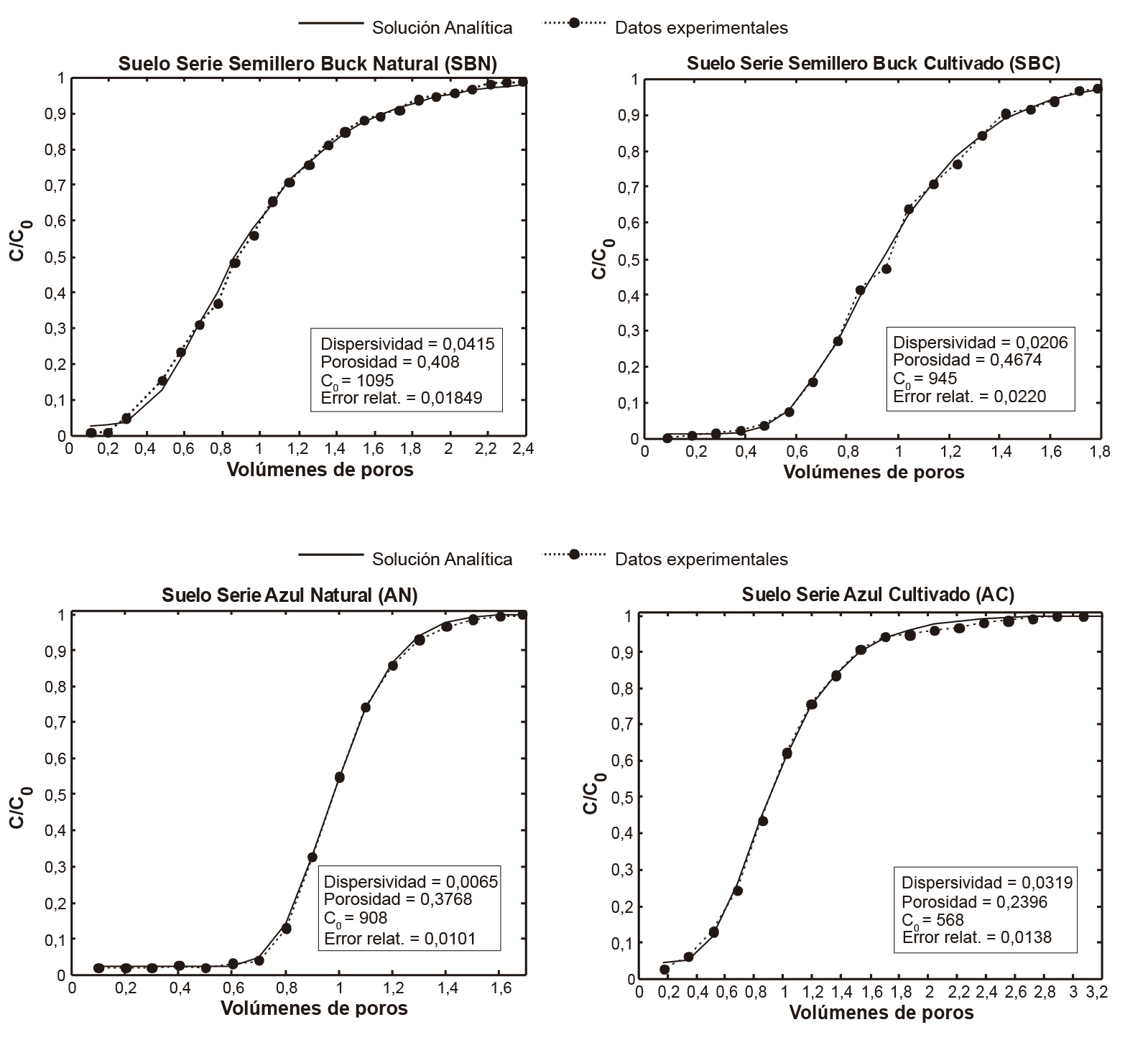Determination of hydraulic parameters in experimental soil columns from the southeast of Buenos Aires province
Keywords:
basin, aquifer, dispersivity, contaminationAbstract
The Quequén Grande river basin is representative of the farming systems from the Pampas region. The aquifer is the main source of water supply for all uses, which highlights the importance to study the mobility of contaminants through the soil to the saturated zone. The aim of this study was to obtain hydraulic parameters of different soil types in the region according to land use (agricultural and natural) under saturated conditions. Two study areas were selected close to the cities La Dulce (Azul Series Soil) and Lobería (Semillero Buck Series Soil), as representatives of the dominant soil types in this area. The columns were eluted with an aqueous solution containing chloride ions and the progressive increase was measured at the end of the column. From the experimental data the breakthrough curve was adjusted using MATLAB software while dispersivity and porosity values were determined from modeled data. These parameters did not differ significantly in Lobería, so it is assumed that tillage does not produce significant changes in the soil profile. Conversely, in La Dulce land use affects the hydraulic properties of the soil leading to lower porosity and higher dispersivity values in soils under tillage use.

Downloads
Published
Issue
Section
License

This work is licensed under a Creative Commons Attribution-NonCommercial-ShareAlike 3.0 Unported License.
Aquellos autores/as que tengan publicaciones con esta revista, aceptan las Políticas Editoriales.


